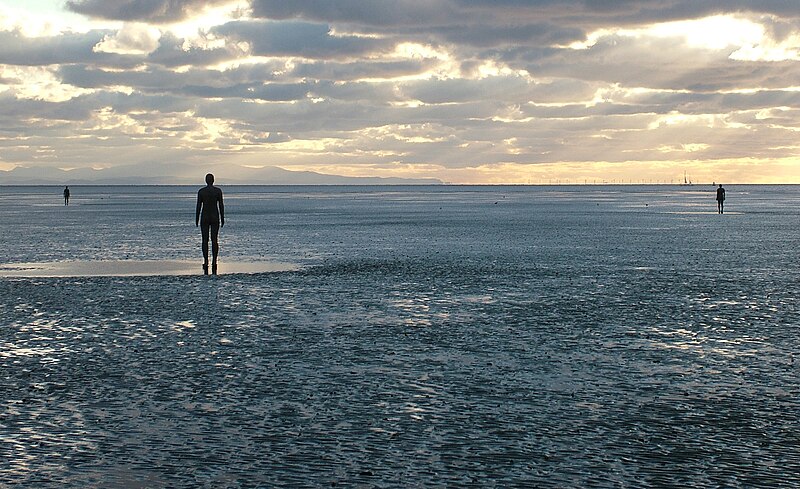 |
| Ivon Hitches, Day's Rest, Day's Work, 1960, Sussex University © the artist's estate |
Sussex Modernism feels like an oxymoron. The counties - rural, rolling, coastal, chalky - have a determinedly timeless provincial appeal. The well-known art they generated in the twentieth century from the washed-out greens of Eric Ravilious to the middle-class flowers and furnishings of the Charleston set are safe and back-waterish. You might think of Ditching and then decide to unthink it as the name Eric Gill hovers into your mind. The Towner curators are determined bring the two words together, by sticking with admirable rigidity to their location and, perhaps less successfully, by bombarding their visitors with a wealth of examples from the late nineteenth century through to the present day, defining Modernism very much as an extended time period rather than a set of values. Curator Hope Wolf has talked about modernisms in the plural and perhaps that would have been a better title, justifying the range of styles she choses to display. This is an exhibition which leaves no stone unturned: generous, inclusive and inventive in its juxtaposition of objects, media and makers.
The Vorticist magazine is a literal Blast in the centre of the first room around which swirls a disparate selection of works. LS Lowry is here, incongruously, with a windmill, Ravilious too, alongside Edward Wadsworth, who sits more comfortably within the modernist canon. Gluck is represented by one of their huge-skied landscapes, peacefully serene and empty, and there are less familiar names: Peggy Angus, whose view of cement works is as pallid as if covered with a dusting of the stuff and Margaret Benecke's icily abstracted Glacier Forms. This first display sets the tone, both in its range of materials - including ceramics - and the focus on overlooked, regional figures. The second room delves deeper into that regionalism, acknowledging the sisters who established a modernist gallery in Lewes (here painted by Cedric Morris) and Mary Stormont, a founder-member of Rye Art Club.
 |
| Amy Sawyer, Gentle Spring Brings Her Garden Stuff to Market, 1896, Russell Cotes Museum, Bournemouth |
Modernism proper comes into the equation with the Ditching-focused display: Jacob Epstein's sculpture and Ethel Mairet's textiles, jazzily displayed against blue, with Ivon Hitchen's dramatic polyptych and William Gear's Vertical Feature popping exuberantly off the wall. Yet this is modernism undercut by magic, mythology and romanticism, and the same is true as you confront four female figures against their blood-red background. Amy Sawyer, Jennifer Binnie, Edward Burne Jones and Alexi Marshall's works are not set-up in opposition to each other, but rather in a sisterly solidarity which coheres the disparate styles and collapses a century of change. It is one of the best hangs I've seen in long time. Before that we have gone into full 'Season of the Witch' territory with darkly trippy landscapes by Carlyle Brown and Pavel Tchelitchew.
The final room shifts mood, from elegy to energy with the Pop Art vibe of Jeff Keen's LAFF, the dynamic co-operatism given off by two panels of the Eastbourne International Workers' Mural and the future-now optimism of László Moholy-Nagy's Pavilion Bexhill on Sea. Edward Burra did his share of eerie, empty landscapes but is here represented by jokey, jazzy etchings and the exhibition ends with pop and popular - Sophie Barber's Kendrick on his Way Back from Camber Sands. This is not the triumph of the new, however, and the introspective, retrospective mood lingers with Julian Bell carrying on the family name and David Bowie's Ashes to Ashes channelling that same restless, rural oddity.
Bowie's video is just one of several film pieces and the great achievement of Sussex Modernism is not just the range of media but the successful integration of the display. Strict chronology or theme are eschewed in favour of aesthetic considerations as the curators invite you to enjoy the art, setting up sight-lines, and formal and colour juxtapositions which enhance and elucidate. Whether this is art which is unique to Sussex, I am not sure: Neo Romanticism is a broad movement in 20th century Britain and the curators themselves acknowledge the impossibility of tying artists to specific regions. More problematically, the label of 'modernism' is at the very least disingenuous and constrictive. As Philip Hoare's recent book William Blake and the Sea Monsters of Love demonstrates, these artists trace a lineage back not just to the late 18th century, but to folk traditions and prehistoric forms. Whilst I can applaud the curators' desire to deconstruct the term, and create a user-friendly title to advertise their show, it is arguably much better to forget it the moment you enter the exhibition. Modernism condemned British artists to a backwater, this show proves that they should be mainstream.


